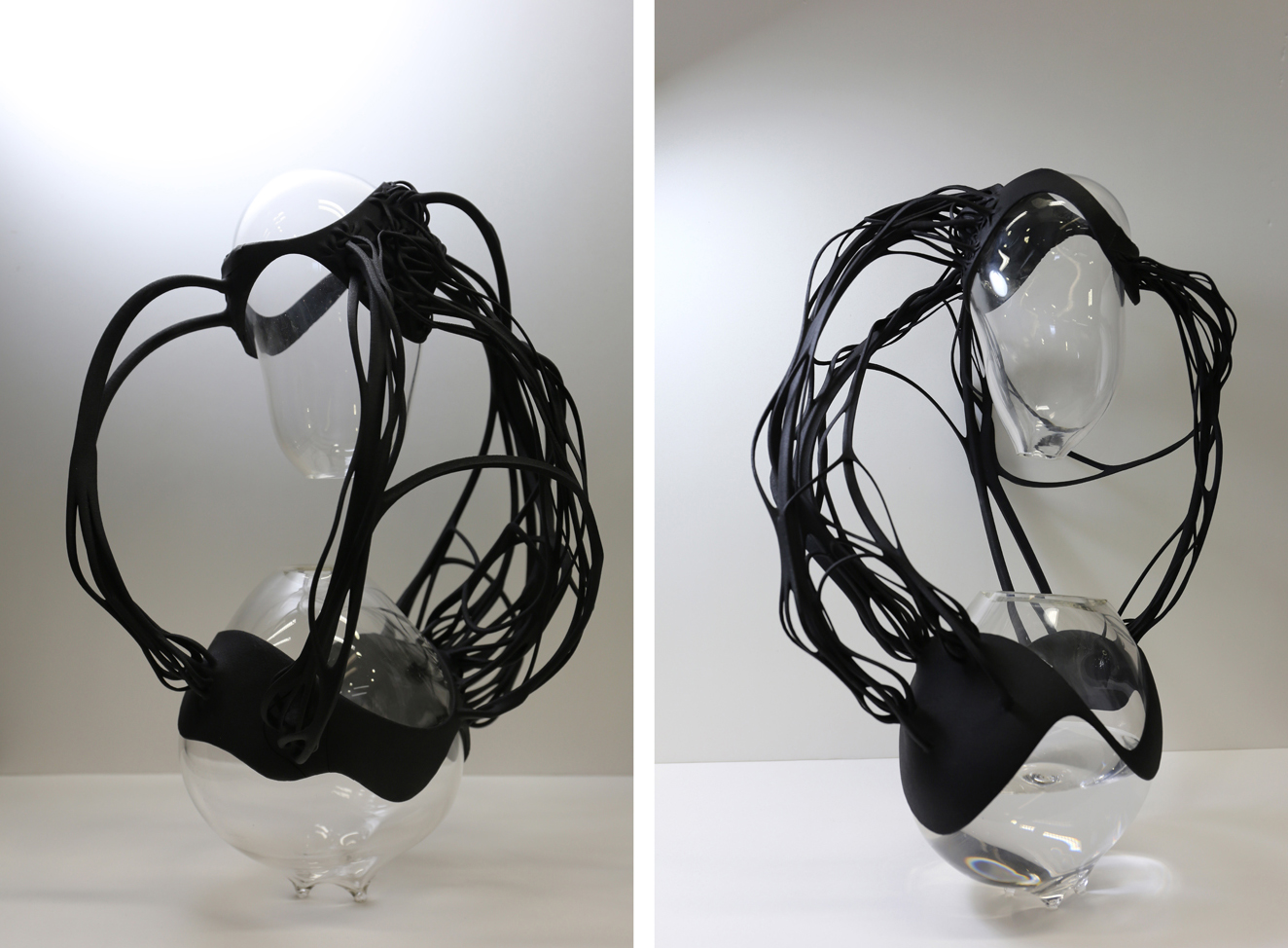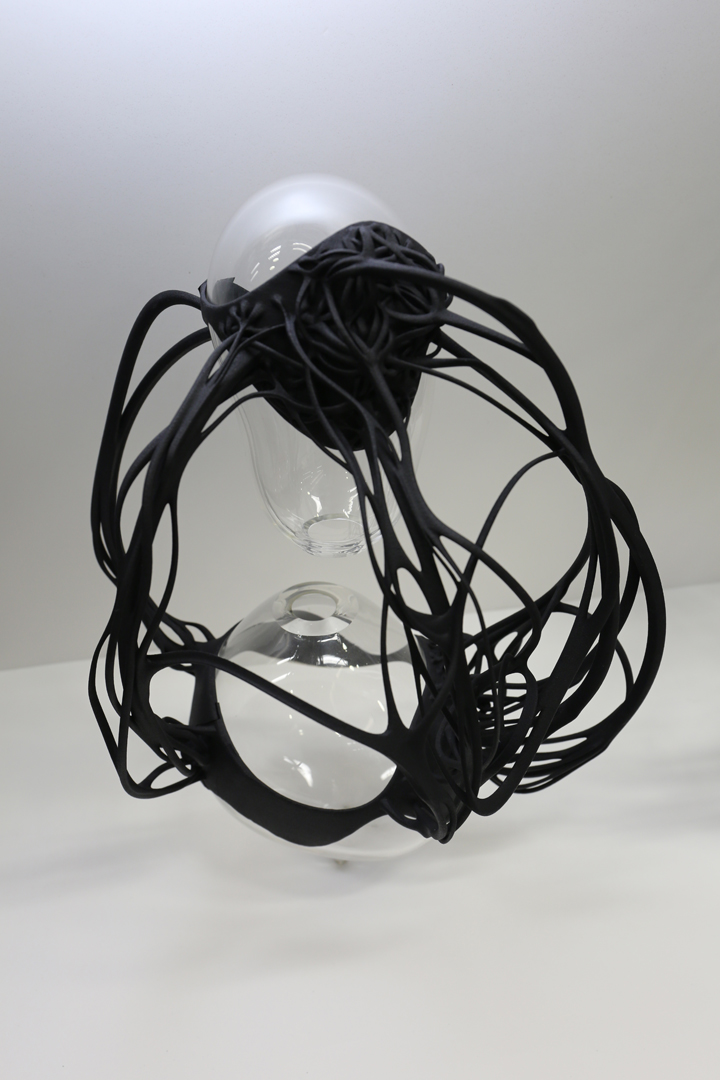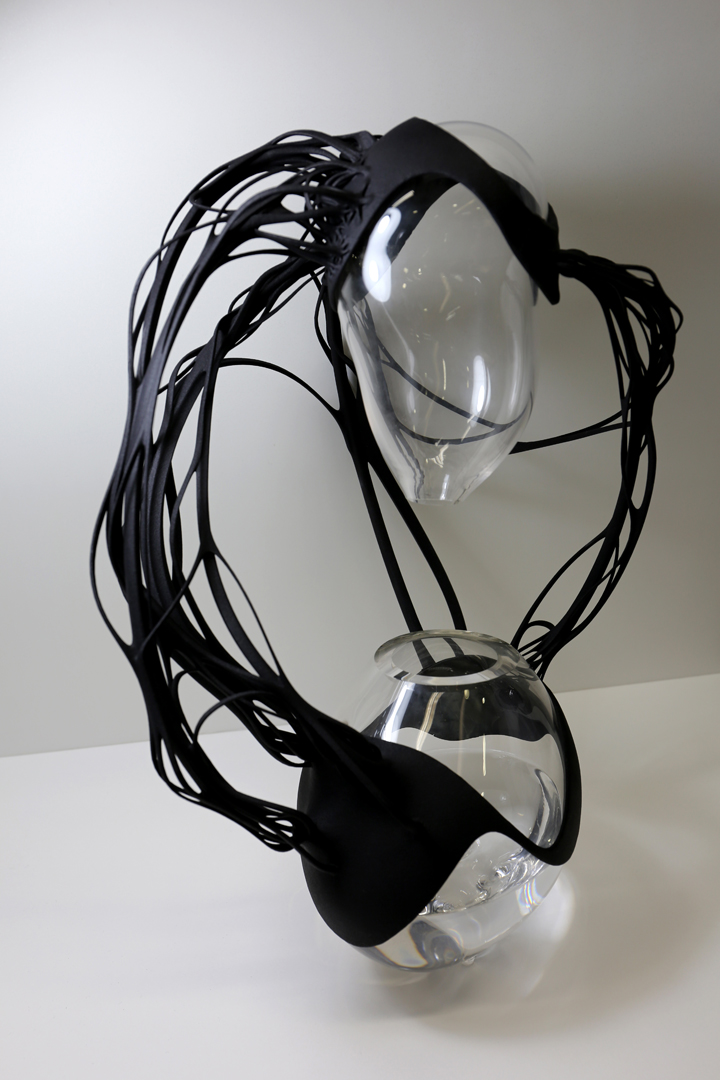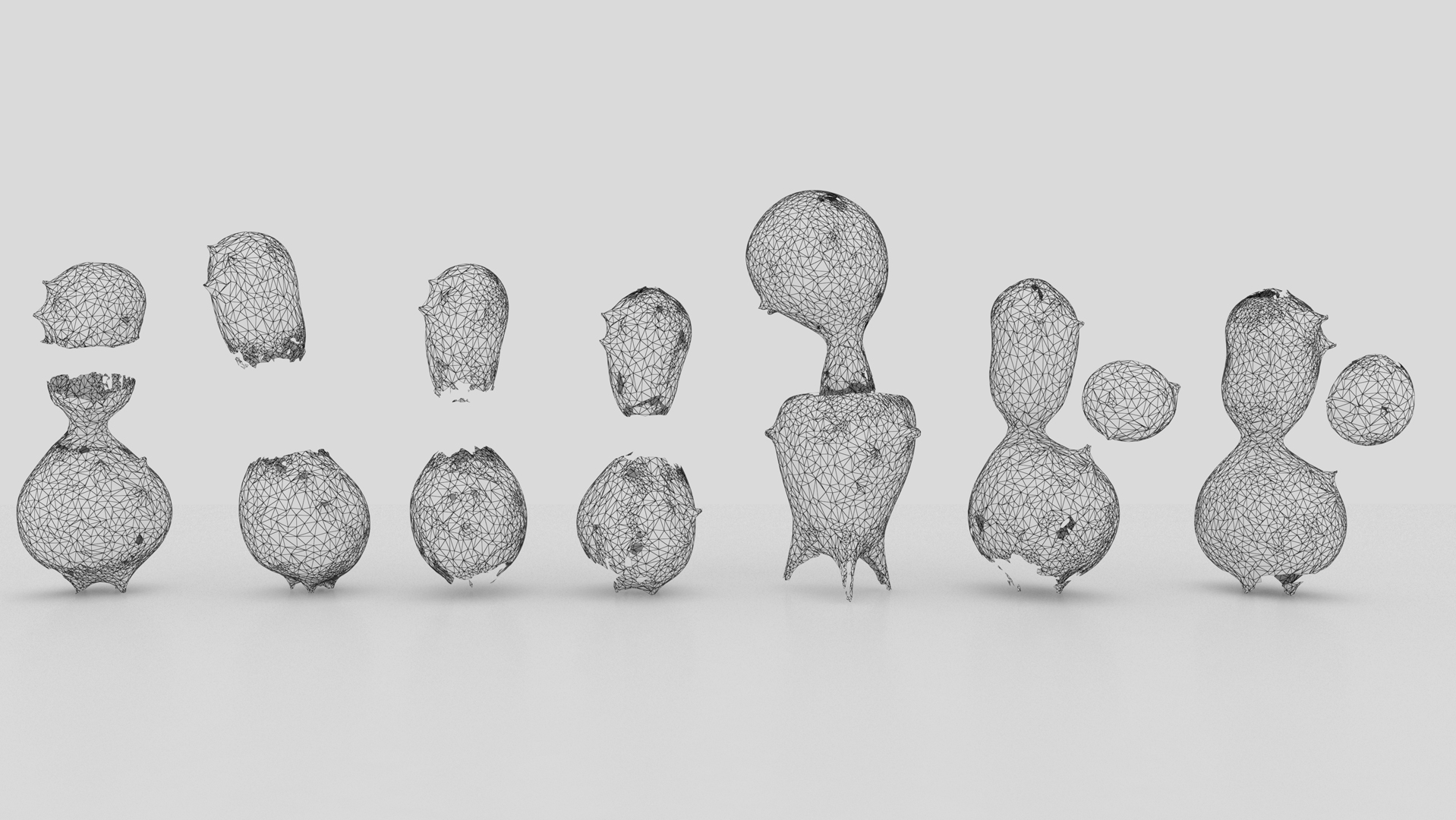Tobias Klein: Glass Entanglement I and II
Artist(s):
Title:
- Glass Entanglement I and II
Exhibition:
Creation Year:
- 2020
Medium:
- Glass, 3D Print (SLS, Polymer)
Size:
- 50 cm (h) x 20 cm (w) x 20 cm (l) x 2
Category:
Artist Statement:
Entanglement consists of two objects. Each is, on the one hand, a unique, handmade, traditionally crafted object — a glass-blown vessel, cut in two parts. Each, on the other, is a replicable, 3D-printed object based on 3D scanning the glass void space. They are entangled imitations of each other without being a copy.
The work articulates the notion of a digital craftsmanship as an operational synthesis between digital and physical materials and tools as poetic (Poïesis) and technical (Technê) expressions, opposing a traditional dualistic separation of digital workflows and analogue making and material understanding.
Extended Summary:
In quantum physics, quantum entanglement is a phenomenon that occurs when a group of particles is generated in such a way that the quantum state of each individual particle cannot be described independently from the other. The work Entanglement constructs a similar state in which neither of the digital or analog parts could be read individually and where neither could be described independently from the other. Entanglement is part of a series of six glass blown vessels, created during my Artist in Residency at the Pilchuck Glass School. The shapes of these volumes and their creation follow loosely the notion of primordial mitosis—the splitting of a single cell into two—the beginning of complex forms of life. After their creation at Pilchuck, the blown glass volumes were cut, creating a straight division between the upper and lower parts in the objects. The complete volumes were not 3D scanned before the act of cutting but were arranged and 3D scanned, held by a series of jigs. This created a situation of disruption between the digital and the analog, in which the digital augments the actual, not through methods of common overlay such as projection mapping, but through digital construction of their Gestalt, adding a void in the form.
The void is invisible and performative to challenge the relationship between the digital practice and the craft workshop – between techne and poiesis. It investigates the possibility of collaborative making from the glass workshop to the digital environment of my practice and introduces the notion of performance into the amalgamation between glass and 3D printed polymer. The aim of the investigation is to create a larger, organism-like construct in which the cut glass volumes that can only exist in a 3D scan/3D print; a state of digital and actual, thus allowing simulation and simulacrum to take place at the same time. This work consists of the physical separation of the cellular glass volumes from one another and the 3D printed form interacting with these single objects to form an ecosystem between the glass volumes The elements are held together by digitally modelled, tendril-like structures, analogous to the biological cell growth when forming multi-cellular higher order organisms. Entanglement is an amalgamate of methods, skills and materials, a hybrid phase matter state, where both sublimation (the scanning of a physical object; the transformation of physical to digital) and reification (the reverse: 3D printed data solidification) form a new organism. Thus, Entanglement is an interplay between glass making, 3D scanning and 3D printing as a choreography in which the scanning of the glass would is performance, constructing a form that otherwise would not be possible, either in the digital or in the physical alone. The work extends the discourse on the emerging qualities of Digital Craftsmanship as a new discipline where material knowledge, digital tooling, and traditional skills are amalgamated and intertwined to form a new understanding and dialogue between practices of making and crafting.
Other Information:
Entanglement consists of two objects. Each is, on the one hand, a unique handmade traditionally crafted object – a glass-blown vessel, cut in two parts. Each, on the other, is a replicable 3D printed object based on scanning the glass and its resulting void space. Each is an imitation of the other without being a copy, but an interplay of tools, techniques and material properties.








